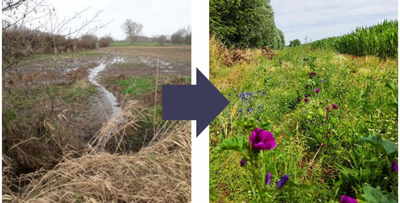Details
- Publication date
- Source
- Green Deal Projects Support Office
Europe is facing two crises of human origin: the climate crisis and the biodiversity crisis. The climate crisis describes climate change, caused by anthropogenic greenhouse gas emissions, and its associated environmental effects. The biodiversity crisis represents the severe harm that is being done to the Earth’s ecosystems and the associated impacts of biodiversity loss. Ecosystem degradation and destruction is primarily caused by land-use change (particularly from agriculture and urbanisation), over-exploitation of natural resources, and climate change. The two issues are intrinsically linked and mutually reinforcing, and satisfactorily resolving either issue requires consideration of the other.
Healthy and functioning ecosystems enable climate change mitigation. Through photosynthesis, plants remove carbon dioxide (CO2) from the atmosphere and store it in their roots, in their above-ground biomass, and in the surrounding soil. The process is known as carbon sequestration and is an example of an ecosystem service (the societal benefits that we receive from nature). When ecosystems are damaged, their ability to store carbon is reduced, either due to a reduction in plant number and species or soil health and coverage, which means that more CO2 remains in the atmosphere.
Ecosystems provide other services, many of which help us to mitigate and adapt to the environmental and social impacts of climate change. Ecosystem services are diverse and vary in function and processes across the planet, but those that support climate change adaptation include flood mitigation, food security, climate regulation and drought mitigation. Examples of other types of ecosystem services include water purification, pollination, disease prevention, provision of materials, tourism and recreation. These services are similarly impeded by low ecosystem health or are left unable to function if ecosystems are destroyed.
It is imperative that both the climate crisis and the biodiversity crisis are addressed to ensure human wellbeing for current and future generations. The feedback loop between climate change and ecosystem degradation requires active intervention to mitigate and adapt to the effects of both. To tackle multiple multifaceted issues at once, a holistic approach needs to be taken. Nature-based solutions (NbS) have been growing in relevance since first conceptualised in the 2000s and are seen as an essential element in resolving these contemporary societal challenges.
Nature-based solutions
In March 2022, the fifth United Nations Environment Assembly adopted 14 resolutions to strengthen actions for nature to achieve the Sustainable Development Goals. Amongst these, world governments formally agreed on the definition of nature-based solutions:
“Actions to protect, conserve, restore, sustainably use and manage natural or modified terrestrial, freshwater, coastal and marine ecosystems, which address social, economic and environmental challenges effectively and adaptively, while simultaneously providing human well-being, ecosystem services and resilience and biodiversity benefits” (UNEP, 2022).
Having a globally agreed definition of NbS strengthens the concept and promotes their use as an effective solution, whilst aiming to prevent the term being misused through greenwashing. In a similar vein, the IUCN has published a Global Standard for NbS which can be used to guide those working with NbS to maximise their effectiveness .
As is explicit in the definition, NbS aim to resolve societal challenges by innovating and harnessing nature’s own processes, products or designs. Societal challenges are diverse, but include biodiversity loss, climate change, land degradation, desertification, poverty eradication and inequality. The IUCN defines the seven major societal challenges that should take priority in NbS implementation as:
Climate change mitigation and adaptation
Disaster risk reduction
Economic and social development
Human health
Food security
Water security
Environmental degradation and biodiversity loss
In addressing one or more of the above societal challenges, NbS are designed in a way that yields multiple additional benefits, which can link to other societal challenges. For example, as a core principle NbS must benefit biodiversity and therefore contribute to ecosystem service generation and functionality. Similarly, it is vital that NbS implementation improves human-wellbeing, which can be amplified through the involvement of stakeholders such as local communities, women, youth and indigenous peoples.
NbS are not a one-size-fits-all solution, and their variety reflects the diversity of ecosystems found on planet Earth. There are various approaches to NbS implementation and as defined by UNEP these fall under protecting, conserving, restoring, and sustainably using or managing these ecosystems. The restoration of natural landscapes such as wetlands or free-flowing river systems can help to address climate change mitigation and water security. Agricultural management strategies, for example the use of specially selected biological controls instead of artificial pesticides, can aim to address environmental degradation whilst supporting economic and social development. Creating or restoring green spaces in urban areas, such as integrating green roofs into the built environment or developing community-run gardens, can develop urban ecosystem services such as climate change adaptation, temperature regulation, food provision and recreation .
Whilst NbS hold great potential to resolve multiple societal challenges and restore a range of ecosystem services, they are context and area dependant, and require research and planning to ensure that they achieve their goals. Consequently, as it stands, NbS have primarily been deployed on a small, pilot-level scale, typically for research and academic purposes. Whilst these efforts have played an important role in understanding and demonstrating the feasibility and effectiveness of NbS, it is now critical to focus on their upscaling. To realise the potential of NbS to answer to the climate and biodiversity crises, their design and implementation needs to be scaled to cover a wider landscape and mainstreamed into different policy, governance, and economic areas.
The EU is positioning itself as a world-leader in NbS by committing to their research, implementation, and upscaling. Dedication to achieving this has been demonstrated in the European Green Deal, where NbS are a key component of many of its goals, such as climate change mitigation and adaptation and the reversal of ecosystem degradation. For example, NbS are highlighted in both the EU’s Biodiversity Strategy 2030 and the newly adopted Nature Restoration Law Regulation, which was adopted by the Council of the European in June 2024. In the Regulation, NbS are recognised as an essential puzzle piece to restore Europe’s ecosystems in a sustainable and equitable manner, for the benefit of the climate and ecosystems. Under the aims of the EU Renovation Wave, the integration of NbS into the EU buildings sector is essential to improve its circularity and bring ecosystem services into the built environment. The Urban Nature Platform provides guidance for mainstreaming NbS into city governance, to (re)connect cities with nature, through restoration and sustainable management. The Farm to Fork strategy aims to reduce the environmental impact of the agriculture sector, including through reinforcing it with NbS and harmonising with other ecosystems.
As well as ambitious policy strategies and regulatory framework, the EU has been funding research and innovation into NbS through its various funding programmes, with as many as 300 NbS-related projects being granted funding thus far. This investment promotes the development of NbS methodologies and strategies that can be upscaled beyond the project-level and mainstreamed into public and private governance. Under its Horizon 2020 Green Deal Call, the EU is funding projects that investigate the design and deployment of scalable NbS in terrestrial, freshwater, coastal and marine ecosystems.
Green Deal Call-funded projects and Nature-based Solutions
Under the Horizon 2020-funded European Green Deal Call, several projects that integrate Nature-based Solutions (NbS) into their work have received funding. These projects aim to confront the climate and biodiversity crises and their impacts by researching, innovating, and implementing NbS. The projects and examples of their work with NbS are explored in this section.

MERLIN - Mainstreaming Ecological Restoration of freshwater-related ecosystems in a Landscape context: INnovation, upscaling and transformation
MERLIN aims to restore damaged freshwater ecosystems, including rivers, streams, and wetlands, whilst addressing additional societal issues with innovative NbS. Not only is the project actively implementing NbS at its demonstration sites, but it is also developing a framework to enable different sectors to transform their relationship with freshwater landscapes and mainstream NbS into their assets and business activities.
The project is removing ten disused dams along the Deba river at its demonstration site in Spain. The dams impede river connectivity and in removing them, MERLIN is restoring the river’s natural flow and allowing aquatic animals, such as fish, to move freely. This NbS is increasing biodiversity at the site and decreasing the risk of flooding during extreme weather events. The demonstration is also an opportunity to research the effects of dam removal and to determine to what extent different ecosystem services can be restored. MERLIN is engaging with local communities to raise awareness of NbS and their environmental and societal benefits.

MERLIN is also restoring the Zwalm River Basin at its demonstration site in the Upper Scheldt catchment, Belgium. The stream suffers from soil erosion and pollution from agricultural runoff, both of which have degraded the watercourse. MERLIN aims to rectify these issues whilst enhancing biodiversity and drought resilience. In order to restore the degraded river channels, an NbS of buffer strips composed of grass and flower species are being planted to mitigate soil erosion (see Figure 4). A co-benefit of this NbS is the creation of novel habitat, which increases biodiversity. Farmers are compensated by MERLIN for the construction and management of the buffer zones on their land, economically benefitting local stakeholders.
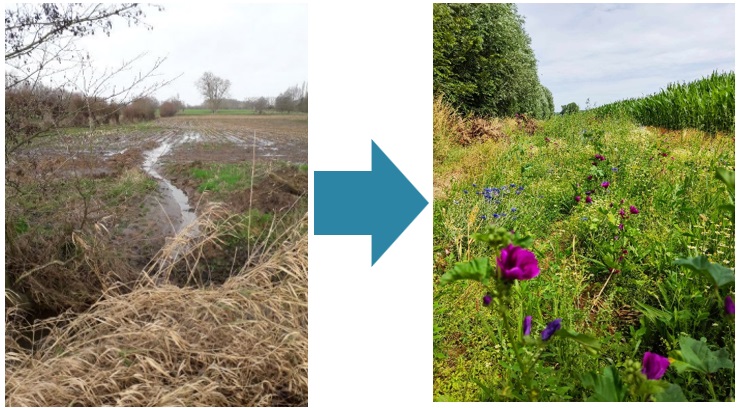
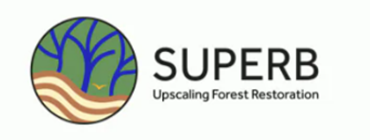
SUPERB - Systemic solutions for upscaling of urgent ecosystem restoration for forest-related biodiversity and ecosystem services
SUPERB is restoring forest ecosystems at its demonstration sites across Europe, developing and demonstrating restoration approaches that can be upscaled beyond the project.
One of these case studies is in Landes de Gascogne, Nouvelle-Aquitaine, France . Most of the region was historically moorland, however, over the past two centuries it has been drained and managed as a predominantly single-species plantation of maritime pine. Although the maritime pine is a native tree species, its original extent in dune and riverside areas was expanded to the wider area as the moorland was drained.
The maritime pine plantation contributes to local socio-economic well-being through timber production and its use as a place of recreation. However, in its current homogenous state, the forest is vulnerable to strong winds, forest fires and pests, all spreading through the plantation with relative ease . Additionally, whilst its management as a monoculture brings economic benefit from timber supply, it reduces the region’s biodiversity.
SUPERB is implementing a restorative NbS approach by planting 10km of multi-species hedgerows throughout the plantation. The hedgerows are composed of the seedlings of 10-12 different plant species that are approved under French and EU law as appropriate for the regeneration of French forests. They act as “green barriers” to wildfire (see Figure 6), extreme weather and pests, therefore improving the forest’s resilience to the pressures it faces, which are exacerbated by climate change. As well as reducing disaster risk, the hedgerows serve as novel habitat, habitat corridors and shelter for plant and animal species, increasing the site’s ability to support biodiversity, including genetic diversity. The benefits associated with planting the hedgerows are balanced with the continued ability of the maritime pine forest to produce timber for the local economy.
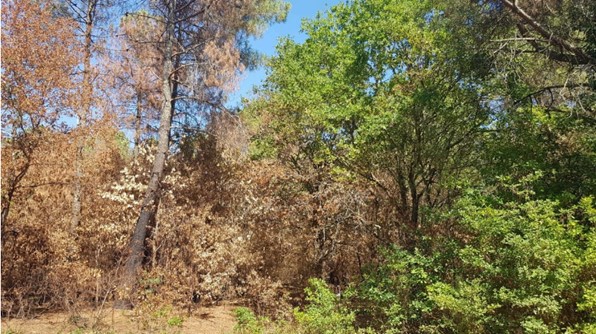
The demonstration requires coordination, input and agreement from over 100 private forest owners, in addition to the local municipality, which highlights the complex stakeholder relationships that often need to be considered for NbS implementation6. Whilst some private owners are happy to adopt the novel hedgerows, others are resistant to a change from traditional local forest management. The demonstration will demonstrate a methodology to stakeholders that can be deployed to increase the resilience of their land to natural disasters.

REST-COAST - Large scale RESToration of COASTal ecosystems through rivers to sea connectivity
REST-COAST is restoring Europe’s coastal ecosystems and developing methodologies to enable large-scle restoration across the coastline. The project is implementing a novel approach to NbS called “nature-based building blocks”. This method creates many small-scale NbS that can address different societal issues in a singular site. Together, the building blocks transform and restore the overall large-scale landscape.
REST-COAST will be planting and restoring sea grass beds at several of its demonstration sites across Europe. This NbS building block will help to mitigate flooding and extreme weather events, as well as to promote biodiversity. The seagrass has a dampening effect on the impacts of wave action by absorbing its energy . By absorbing this energy, less sea-floor sediment is displaced and therefore the coastline is protected from erosion. Similarly, at REST-COAST’s Wadden Sea demonstration site, the coastline is fortified by a traditional dike sea wall system to prevent flooding and protect agricultural land. Restoring the seagrass beds as an NbS building block helps to protect the dike from erosion, reducing maintenance costs for stakeholders.
A dike is an embankment that is built to prevent flooding, typically as an artificial barrier between the land and sea.
At REST-COAST’s demonstration site in the Arcachon bay, France, the project will be restoring the degraded ecosystem as an NbS, with the aid of artificial infrastructure . The area is ecologically important as it is home to marine animals such as whales and dolphins, and hosts various habitats that are used for overwintering and nesting by bird species. It also has one of the largest Zostera noltii seagrass meadows in Europe, which is under threat from nearby aquaculture, urbanisation and maritime traffic, and has severely declined in coverage. The reduced wave dampening caused by loss of the seagrass worsens the situation and causes further uprooting of the plant. To counteract this issue, REST-COAST will be installing artificial barriers made from rope and coconut fibre (see Figure 5) that mimic the seagrass and protect the meadow from adverse weather and tidal conditions. The barrier gives the seagrass meadow the opportunity to regenerate. The seagrass meadow is an important protection against erosion in the Arcachon bay and helps to sequester carbon, as well as supporting biodiversity. The hybrid restorative NbS with an artificial barrier will allow ecosystem services to function and return biodiversity to the local area.
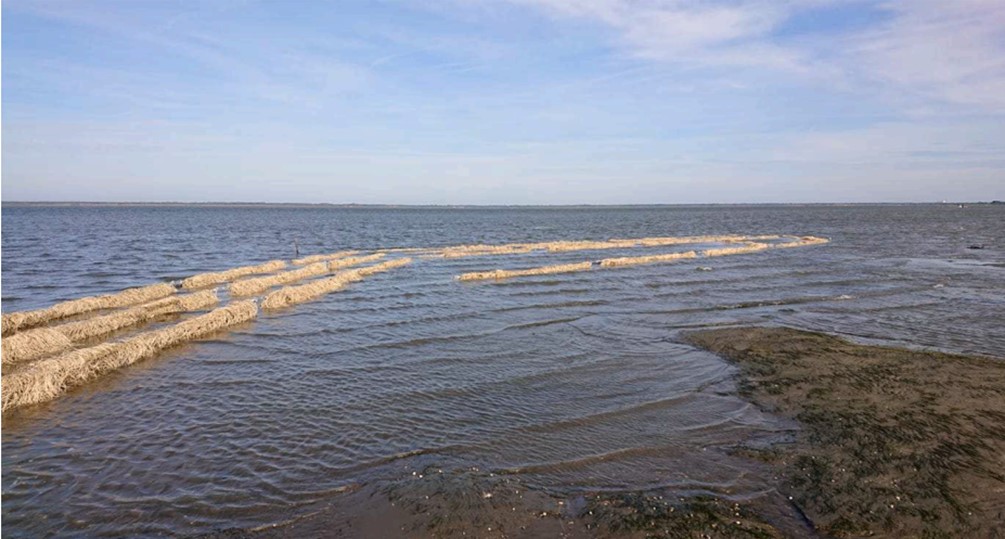

WaterLANDS
WaterLANDS aims to demonstrate wetland restoration at hands-on demonstration sites, including peatlands, coastal lagoons, salt marshes and estuaries. The project is developing frameworks that will allow wetland restoration to be upscaled across Europe. Restoring wetlands is an NbS as healthy, functioning wetlands serve to address multiple societal challenges . For example, peatlands have huge potential for climate change mitigation and adaptation. Although peatlands cover only three percent of the Earth’s terrestrial surface, thirty percent of carbon that is stored in soils is found in peat soils , which is twice that of all forests combined. Healthy wetlands can also mitigate flood and storm risk, as well as support significant biodiversity.
WaterLANDS is also implementing targeted NbS, with the aim that these innovations can be upscaled beyond the project. For example, at its demonstration site in the Eems-Dollard estuary, located in the Netherlands, the project is working with partners to support NbS implementation. Together, they are removing excess silt from the estuary, which if ignored can have detrimental impacts on water quality, biodiversity, and commerce. The removed surplus silt is then being used in several ways to address societal challenges . It is processed to make clay that is used to reinforce and heighten local dikes, which protect against storms, flooding and climate change-induced sea-level rise. Salt marshes, which serve as important habitat in an otherwise intensively farmed environment and as a recreational beauty spot for visitors, have been built to capture this silt. Finally, a “double dike” structure is under construction in the area, reinforcing a pre-existing, traditionally constructed dike with clay and behind this, a second inland dike is being built using silt (see Figure 5). Once operational, the flooded area between the two dikes will be tidal, with an inflow of water creating a pair of brackish tidal lagoons. Not only will this double dike system serve to increase biodiversity by creating a novel habitat, but it will also contribute to the local economy as there is potential for farming, aquaculture and clay extraction in the tidal lagoons. The double dike itself will support flood mitigation and adaptation to climate change-induced sea level rises.
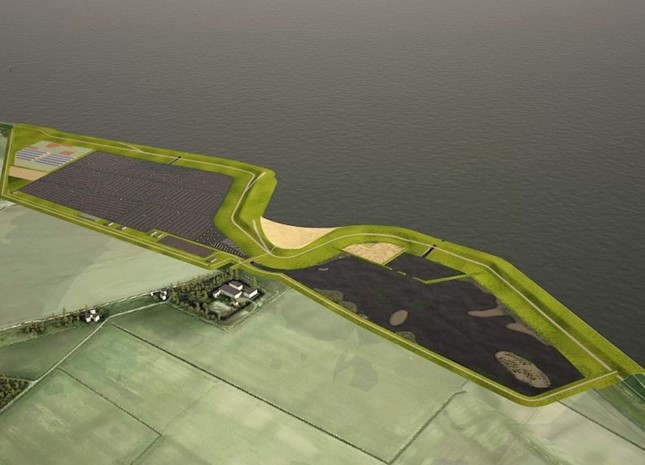

SILVANUS - Integrated Technological and Information Platform for Wildfire Management
SILVANUS aims to make European forests more resilient to wildfires. These disaster events, which are exacerbated by climate change, pose a threat to local climate and economy, human safety, and biodiversity. The project will develop forest management methodologies to prevent and limit the spread of forest fires. NbS will play a part in its strategy, supported by technological solutions. Additionally, NbS are implemented in the post-fire restoration phase of wildfire management, with practices such as natural regeneration and reforestation being conducted at demonstration sites.
See the Trailblazer animation from SILVANUS
At SILVANUS’ demonstration site in Cova da Beira, Portugal, the project is investigating the potential of land management through natural livestock grazing . This NbS addresses both prevention of wildfire, by regulating the biomass available as wildfire fuel, and restoration of the ecosystem’s fertility and plant diversity . SILVANUS will be comparing this NbS to mechanical clearing of plant matter to evaluate effectiveness. As well as natural grazing, the project will also implement digital monitoring of the site, for example with satellite imagery. This demonstrates how technology can support NbS to maximise their success.
At its Indonesian demonstration site in Sebangau National Park, SILVANUS is analysing the application of an NbS that is typically used in tropical peat swamp forests, called canal blocking . This technique is used to support the restoration of peat ecosystems that have experienced degradation and drainage due to the construction of drainage canals. The canal blockages reduce the rate of groundwater loss and increase the water level of peatland. The objective is to maintain the hydrological balance of the peatland by seeking to settle the water for longer periods. Rewetting the peat will reduce the risk of forest fire in the region as well as restoring the natural peat swamp forest ecosystem that can support vegetation growth and provide a food source for wildlife and humans.
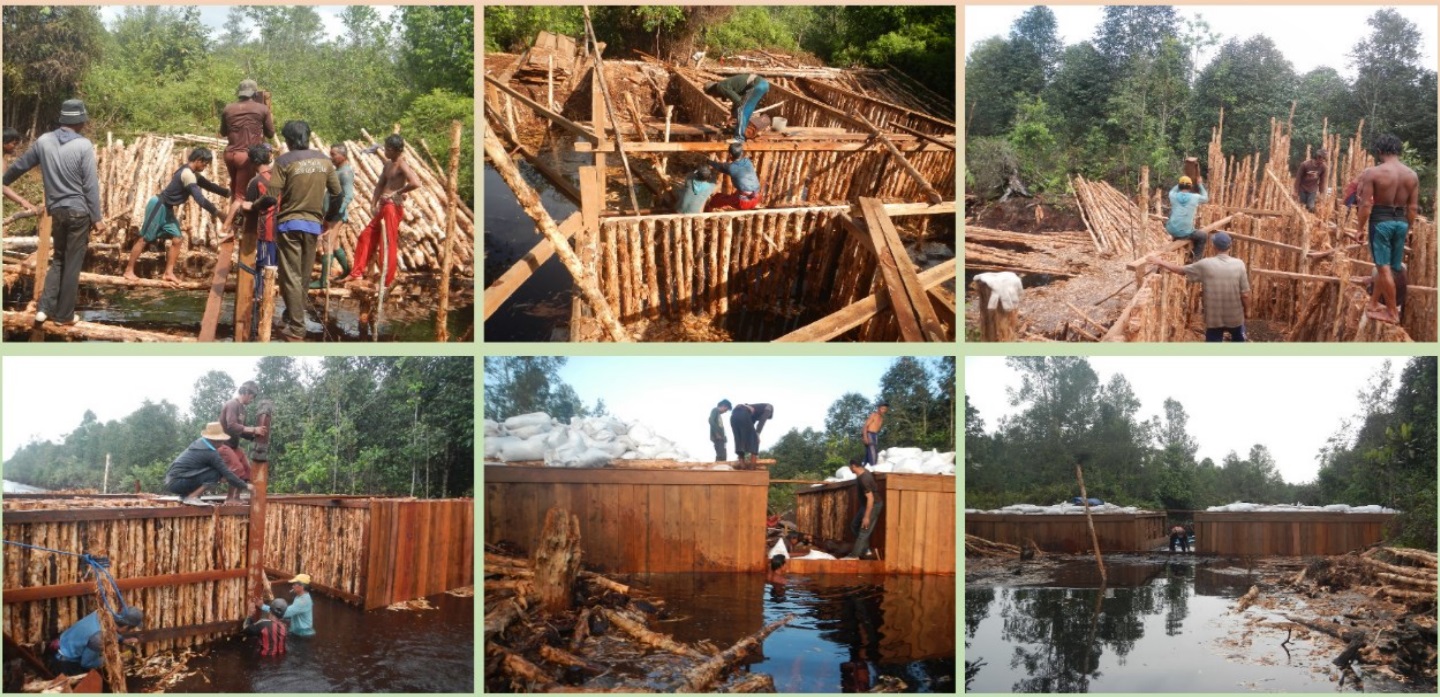

FIRELOGUE – Cross-sector dialogue for Wildfire Risk Management
Wildfires are of an increasing concern across the planet, being of higher frequency and intensity than in previous decades, as well as occurring in locations where historically they have not occurred before. Actions need to be taken to reduce the risk of wildfires and the destruction they cause, and to support the EU’s efforts to mitigate climate change and biodiversity loss. FIRELOGUE is supporting and coordinating the outputs of four projects (known as Green Deal Innovation Actions) that are researching and designing wildfire risk management solutions. The four Innovation Actions are TREEADS, FIRE-RES, SILVANUS and FirEUrisk. The FIRELOGUE project integrates results from the Innovation Actions and translates them into actionable policy recommendations. FIRELOGUE also publishes the results through its Lessons on Fire knowledge sharing platform.
FIRELOGUE has five thematic working groups, which include expert representatives from relevant fields, to integrate results. Two working groups address the use of NbS for wildfire risk reduction: the Environment/Ecology Working Group and the Insurance Working Group. NbS strategies for wildfire risk mitigation can include forms of nature restoration, sustainable forest management (with the careful use of forest thinning and controlled burning), domestic and wild herbivore grazing practices, land use planning and the integration of NbS into insurance mechanisms.
FIRELOGUE’s other activities include organising webinars and delivering reports on the topic of embedding the NbS concept into integrated wildfire risk management strategies. For example, they have submitted a paper to a special issue of the Fire journal on the topic of Nature-Based Solutions to Extreme Wildfires.
Across its activities, FIRELOGUE teaches lessons learnt, along with technical, financial and governance insight, to frame different perspectives of NbS into integrated and equitable wildfire and disaster risk reduction. Some preliminary recommendations focus on the need to have an appropriate definition of NbS in relation to wildfire risk management, and explore concepts such as fire-smart forestry, natural-fire regime restoration or fire-resilient landscapes, as well as conservation and re-wilding, as different options for NbS policy.
Conclusion
Nature-based solutions (NbS) have a key role to play in mitigating and adapting to the climate and biodiversity crises. Unlocking their potential by taking inspiration from nature to solve societal issues and enhance ecosystem services will help build a resilient future for Europe. The European Union recognises their importance in building a sustainable economy and society, in line with the EU Green Deal ambitions. A wide range of nature-based solutions are being researched, implemented and evaluated under the Horizon 2020 Green Deal Call. The Green Deal Call-funded projects that are working with NbS aim to develop methodologies that can be upscaled beyond the actions of the project, setting the path for NbS to be mainstreamed into EU policy, governance, and a new, sustainable way of thinking.
Find out more about the 17 EU Green Deal Call-funded projects in the climate change and biodiversity working group.
Find out more about nature restoration:
